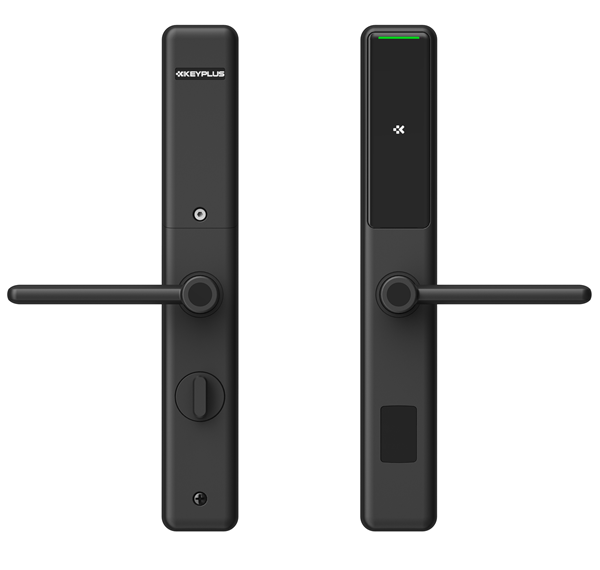Exploring the Role of Access Control Solution in Enhancing Security Tools Effectiveness and Efficiency
Accessibility control systems are increasingly identified as important parts in the landscape of safety and security monitoring, giving a structured approach to control accessibility to sensitive areas and info. Their capacity to integrate with numerous safety and security innovations, such as security cameras and alarm, significantly boosts the total effectiveness and efficiency of safety procedures. Nevertheless, as companies browse the intricacies of execution and monitoring, various difficulties arise that warrant consideration. What effects do these obstacles hold for the future of security procedures and modern technologies?
Understanding Accessibility Control Solution
Access control systems play a crucial function in making sure the safety and security of numerous atmospheres, from corporate workplaces to sensitive federal government facilities. These systems manage who can enter or leave a designated area, thereby securing possessions and delicate info. The basic elements of gain access to control systems include identification, permission, and authentication processes.
Identification entails confirming a person's identity, typically with qualifications such as essential cards, biometric information, or passwords. Once determined, verification confirms the individual's right to accessibility, frequently via multi-factor verification methods to enhance protection. Lastly, permission establishes the level of gain access to given, allowing for distinguished authorizations based upon roles within the organization.
Accessibility control systems can be classified into two main types: physical and rational. Physical accessibility control pertains to tangible locations, while logical accessibility control regulates electronic information systems. Both types work synergistically to provide extensive security options.
Integration With Security Technologies
The integration of access control systems with other protection modern technologies is necessary for producing a holistic safety atmosphere. By combining access control with video clip surveillance, breach detection, and security system, organizations can boost their general safety and security posture. This interconnected structure permits real-time monitoring and quick action to safety and security cases, enhancing situational awareness and functional efficiency.
For circumstances, integrating accessibility control with video security enables protection workers to validate access occasions visually, ensuring that just licensed people are given access. When gain access to control systems are connected to alarm system systems, any unapproved accessibility attempts can cause immediate notifies, motivating quick activity.
Moreover, the combination of accessibility control with cybersecurity measures is increasingly vital in protecting physical assets and sensitive data. By aligning physical safety methods with IT security systems, organizations can guarantee that both physical and electronic accessibility factors are monitored and controlled efficiently.
Benefits of Improved Safety Procedures

Furthermore, enhanced protection procedures help with real-time monitoring and incident feedback. With incorporated systems that include surveillance cameras, alarm systems, and gain access to controls, safety and security groups can quickly recognize and resolve possible dangers. This positive method enables for timely interventions, minimizing the possibility of security breaches and potential losses.
Additionally, reliable safety and security procedures add to a culture of safety within the organization. Employees are most likely to feel even more secure when they recognize that robust measures remain in place, bring useful reference about enhanced spirits and productivity. The use of information analytics from accessibility control systems enables companies to assess safety fads, enhance policies, and designate resources effectively.
Considerations and difficulties

In addition, companies must deal with the capacity for information violations. Accessibility control systems frequently deal with delicate info, and any kind of susceptabilities can reveal this information to unauthorized accessibility. customized security solutions. Ensuring robust cybersecurity measures is important to protect versus such dangers
Individual training is one more vital factor to consider. Workers need to comprehend exactly how to utilize access control systems efficiently, as improper use can bring about more info here safety and security voids. In addition, companies need to balance security with customer ease; excessively restrictive access can prevent performance and cause workarounds that compromise security methods.
Conformity with legal and regulatory demands is also extremely important. Organizations needs to ensure that their accessibility control systems meet sector requirements and neighborhood laws, which can differ considerably. Ultimately, the continuous upkeep and administration of these systems call for devoted resources, making it crucial for companies to allocate proper budgets and workers to make certain long-lasting efficiency and performance.

Future Patterns in Accessibility Control
Anticipating the future of gain access to control discloses a landscape progressively formed by technological innovations and developing security demands. One significant pattern is the assimilation of artificial knowledge (AI) and artificial intelligence, which boost decision-making capacities image source and automate threat detection. These innovations enable real-time analysis of gain access to patterns, allowing even more receptive and flexible protection procedures.
Biometric verification is also gaining traction, with developments in fingerprint, facial recognition, and iris scanning technologies supplying enhanced security and user convenience. As these systems become more cost effective and advanced, their adoption across numerous markets is anticipated to increase.
One more emerging fad is the change in the direction of cloud-based gain access to control systems. These services offer scalability, remote management, and central information storage, permitting companies to enhance operations and improve efficiency.
Moreover, the Web of Things (IoT) is readied to change gain access to control by enabling interconnected tools to interact and share data, thereby improving situational awareness and protection responsiveness.
Verdict
To conclude, access control systems dramatically improve the effectiveness and effectiveness of protection devices by helping with specific identification, verification, and permission procedures (customized security solutions). Their combination with security and alarm systems cultivates a proactive protection environment that resolves potential violations in real-time. While factors to consider and difficulties exist, the ongoing development of accessibility control technologies guarantees to more improve safety operations. Ultimately, these systems are important to guarding sensitive areas and details within organizations, guaranteeing a durable safety structure.
Gain access to control systems are increasingly acknowledged as necessary parts in the landscape of protection monitoring, giving an organized strategy to manage accessibility to delicate locations and info. Physical accessibility control pertains to substantial areas, while sensible accessibility control regulates digital info systems.The combination of access control systems with other security technologies is essential for developing an all natural safety atmosphere. Gain access to control systems frequently deal with delicate details, and any type of vulnerabilities could subject this data to unapproved gain access to. Organizations must stabilize safety with user convenience; extremely restrictive accessibility can impede efficiency and lead to workarounds that compromise safety procedures.